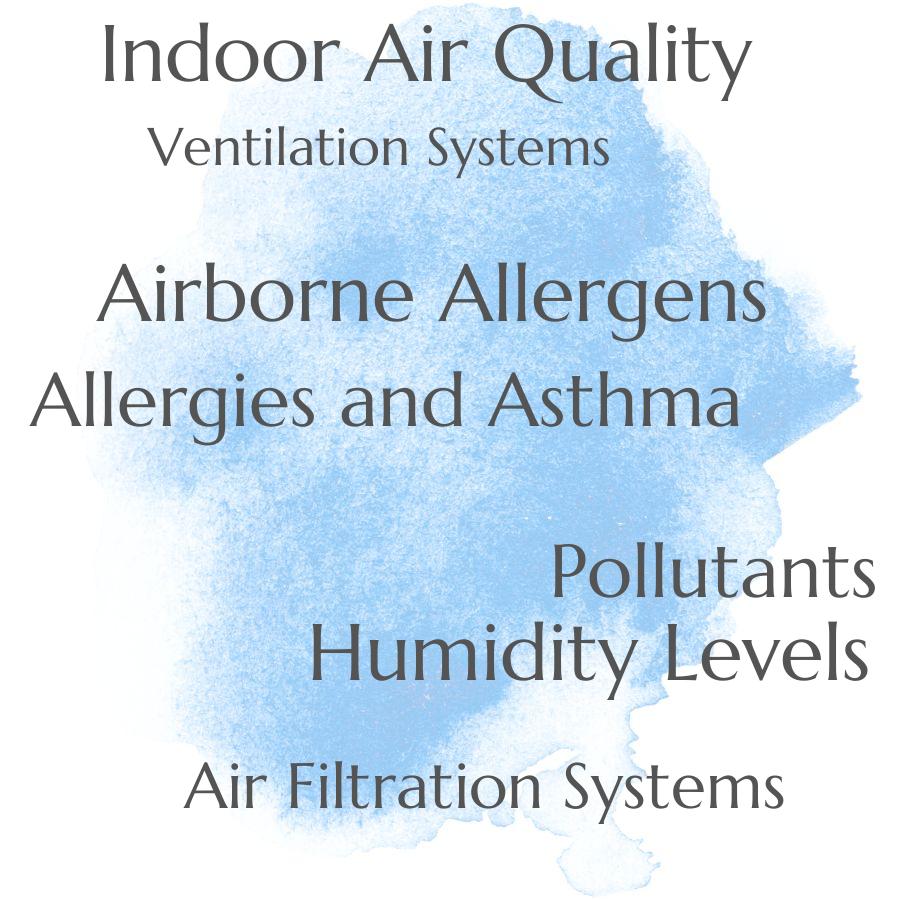Indoor air quality can significantly affect allergies and asthma, as poor air quality can lead to an increased concentration of allergens, such as dust mites, pet dander, and mold spores. This can trigger allergic reactions and worsen asthma symptoms.
Indoor air quality has a major impact on allergies and asthma. Poor indoor air quality can trigger allergic reactions and asthma attacks, while good indoor air quality can help reduce symptoms.
In this blog post, we’ll discuss how indoor air quality affects allergies and asthma and what you can do to improve the air in your home or office.
Airborne Allergens

These particles come from a variety of sources, including dust mites, pet dander, mold spores, pollen, and other organic materials. When these allergens become airborne in an indoor environment they can be breathed in by people who suffer from allergies or asthma.
This can lead to symptoms such as sneezing, coughing, wheezing and difficulty breathing. Poor air quality indoors can also worsen existing allergies or asthma symptoms due to the increased concentration of allergens present in the air.
To reduce the risk of exposure to airborne allergens it is important to keep indoor spaces clean and free from dust and other debris that may contain these particles. Using air purifiers with HEPA filters can help remove some of these particles from the air before they are inhaled by those with allergies or asthma.
Pollutants
These pollutants can come from many sources, including cleaning products, furniture, building materials, and even pets. Pollutants can cause allergies and asthma to worsen by irritating the eyes, nose, throat and lungs.
They can also trigger an allergic reaction or an asthma attack in people who are already sensitive to them. In addition to causing physical discomfort for those with allergies or asthma, pollutants may also increase their risk of developing long-term health problems such as chronic bronchitis or emphysema.
It is important to reduce the amount of pollutants in your home by regularly cleaning surfaces and using natural cleaners whenever possible. It is important to ensure proper ventilation so that fresh air can circulate throughout your home and help reduce pollutant levels.
Humidity Levels
High humidity levels create an environment that is conducive to the growth of mold, dust mites, and other allergens. These allergens can trigger allergic reactions in people with allergies or worsen symptoms for those with asthma.
On the other hand, low humidity levels can cause dryness in the air which can irritate eyes, noses, throats, and skin. This irritation may also lead to increased allergy symptoms or asthma attacks.
Therefore it is important to maintain a healthy balance of humidity indoors in order to reduce allergy and asthma symptoms caused by poor indoor air quality.
Ventilation Systems
Ventilation systems help to circulate fresh air throughout a building, while also removing stale, polluted air. This helps to reduce the concentration of allergens such as dust mites, pet dander, mold spores, and pollen that can trigger allergic reactions or worsen asthma symptoms.
Ventilation systems can help to control humidity levels which can prevent mold growth and reduce dust mite populations. Properly maintained ventilation systems are essential for keeping indoor air clean and healthy for those with allergies or asthma.
Air Filtration Systems
These systems work by drawing in air from the room and passing it through a filter that traps the particles. The filtered air is then returned to the room, creating an environment with fewer allergens that can trigger allergies or asthma attacks.
Air filtration systems come in many different types and sizes, ranging from portable units for single rooms to whole-house models that cover multiple rooms. They can also be used in combination with other methods of improving indoor air quality such as using HEPA filters on vacuum cleaners or installing exhaust fans in bathrooms and kitchens.
Dust Mites
They can be found in carpets, furniture, bedding, and other fabrics. Dust mites thrive in warm, humid environments and can cause allergic reactions such as sneezing, coughing, itchy eyes or skin rashes.
Poor indoor air quality caused by dust mite infestations can worsen allergies and asthma symptoms for those who are sensitive to them. To reduce the presence of dust mites indoors, regular vacuuming is recommended to remove any existing dust particles from carpets or furniture.
Washing bedding regularly with hot water will help reduce the number of dust mites present in the home environment.
Mold Spores
These particles can cause allergic reactions and asthma symptoms in people who are sensitive to them. When mold spores enter the air inside a home, they can settle on surfaces such as furniture, carpets, walls, and other objects.
This increases the amount of airborne allergens in the indoor environment which can trigger allergies and asthma attacks in those with sensitivities. In addition to causing respiratory problems, exposure to high levels of mold spores has been linked to other health issues such as headaches, fatigue, skin irritation, and even depression.
To reduce exposure to these allergens it is important for homeowners to keep their homes clean and dry by regularly cleaning surfaces with an anti-fungal cleaner or using a dehumidifier if necessary.